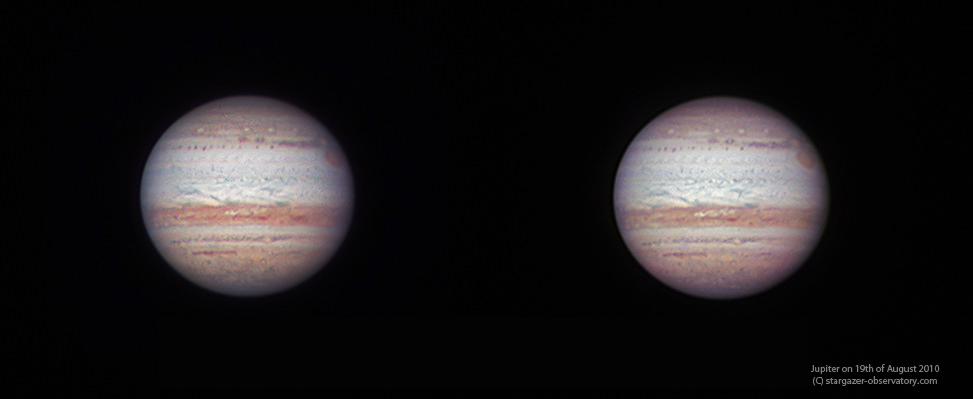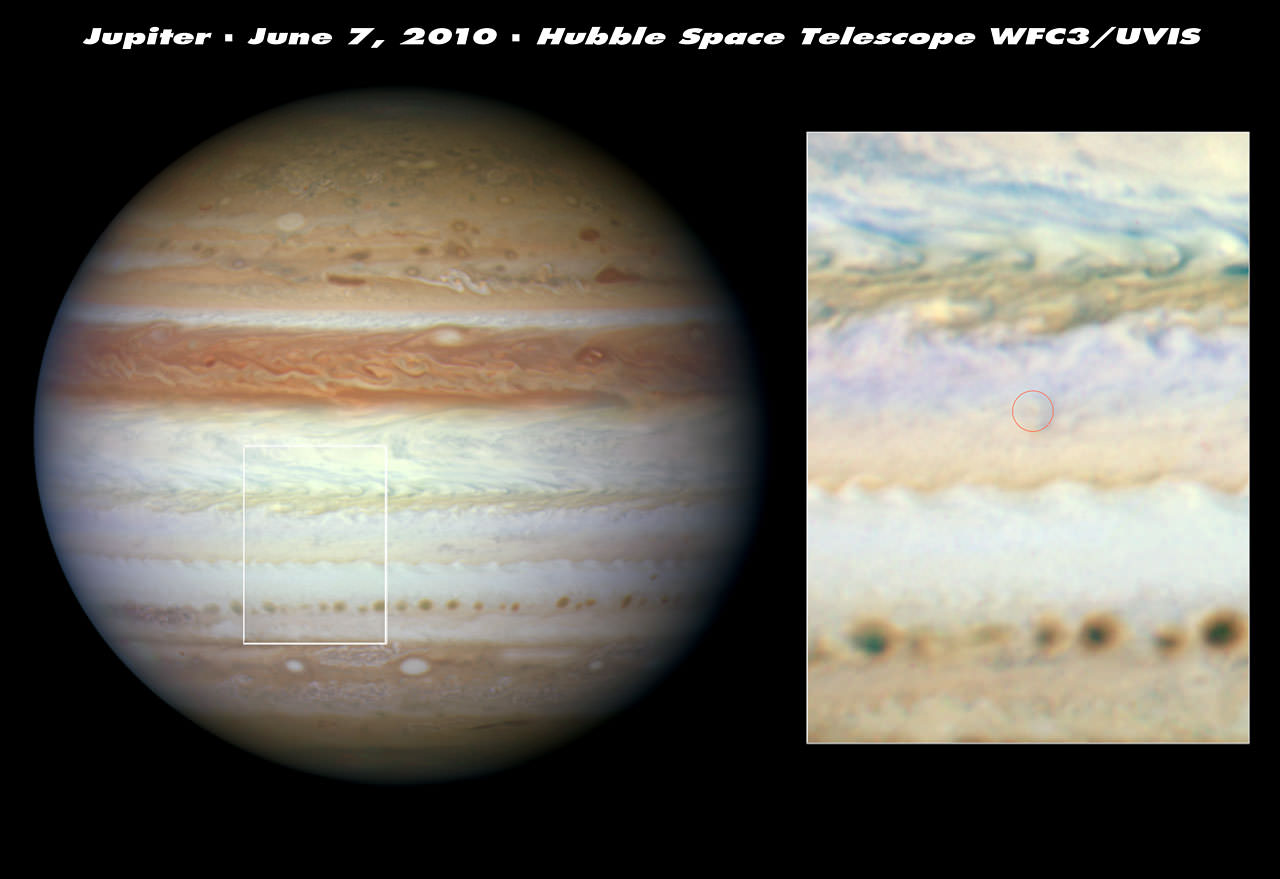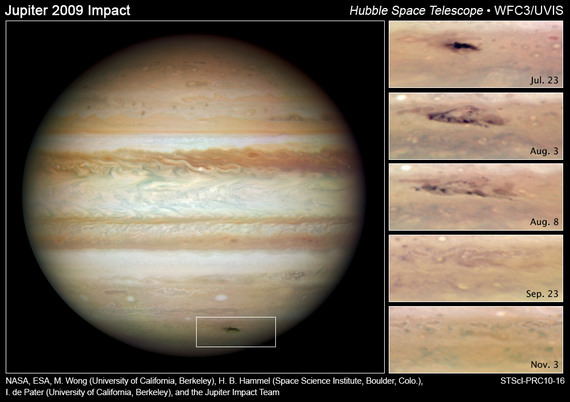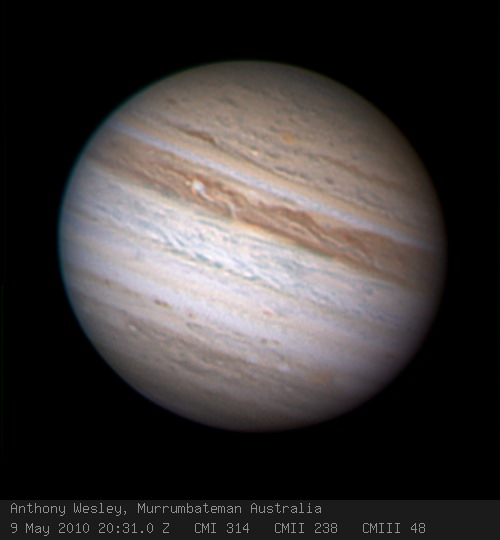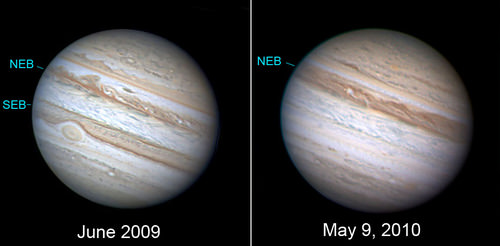[/caption]
Poor Jupiter just can’t seem to catch a break. Ever since 1994, when our largest planet was hit by Comet Shoemaker-Levy, detections of impacts on Jupiter have occurred with increasing regularity. Most recently, an impact was witnessed on August 20. On June 3rd of 2010, (coincidentally the same day pictures from Hubble were released from a 2009 impact) Jupiter was hit yet again. Shortly after the June 3rd impact, several other telescopes joined the observing.
A paper to appear in the October issue of The Astrophysical Journal Letters discusses the science that has been gained from these observations.
The June 3rd impact was novel in several respects. It was the first unexpected impact that was reported from two independent locations simultaneously. Both discoverers were observing Jupiter with aims of engaging in a bit of astrophotography. Their cameras were both set to take a series of quick images, each lasting a fifth to a tenth of a second. This short time duration is the first time astronomers have had the ability to recreate the light curve for the meteor. Additionally, both observers were using different filters (one red and one blue) allowing for exploration of the color distribution.
Analysis of the light curve revealed that the flash lasted nearly two seconds and was not symmetric; The decay in brightness occurred faster than the increase at onset. Additionally, the curve showed several distinct “bumps” which indicated a flickering that is commonly seen on meteors on Earth.
The light released in the burning up of the object was used to estimate the total energy-released and in turn the mass of the object. The total energy released was estimated to be between roughly (1.0–4.0) × 1015 Joules (or 250–1000 kilotons).
Follow-up observations from Hubble three days later revealed no scars from the impact. In the July 2009 impact, a hole punched in the clouds remained for several days. This indicated the object in the June 3 impact was considerably smaller and burned up before it was able to reach the visible cloud decks.
Observations intended to find debris came up empty. Infrared observations showed that no thermal signature was left even as little as 18 hours following the discovery.
Assuming that the object was an asteroid with a relative speed of ~60 km/sec and a density of ~2 g/cm3, the team estimated the size of the object to be between 8 and 13 meters, similar to the size of the two asteroids that recently passed Earth. This represents the smallest meteor yet observed on Jupiter. An object of similar size was estimated to be responsible for the impact on Earth in 1994 near the Marshall Islands. Estimates “predict objects of this size to collide with our planet every 6–15 years” with significantly higher rates on Jupiter ranging from one to one hundred such events annually.
Clearly, amateur observations led to some fantastic science. Modest telescopes, “in the range 15–20 cm in diameter equipped with webcams and video recorders” can easily allow for excellent coverage of Jupiter and continued observation could help in determining the impact rate and lead to a better understanding of the population of such small bodies in the outer solar system.


